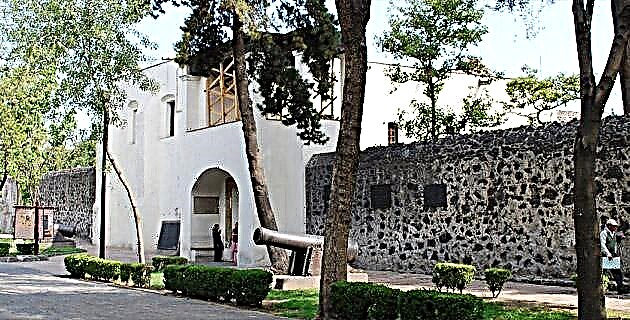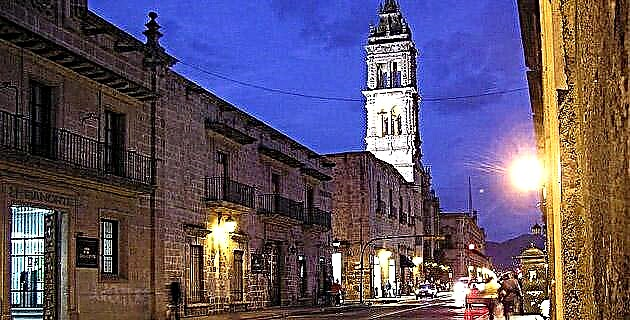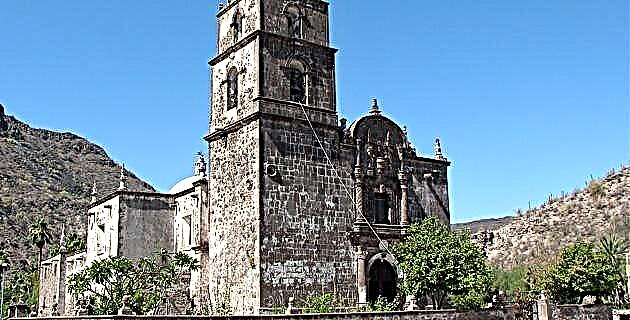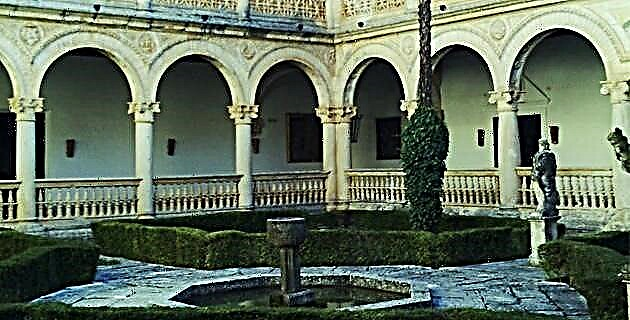
Sixty-four years had passed since the consummation of the conquest of New Spain, and there were already four great nunneries; nevertheless the centuries and the religious tradition demanded the birth of more convents.
Sixty-four years had passed since the consummation of the conquest of New Spain, and there were already four great nunneries; nevertheless the centuries and the religious tradition demanded the birth of more convents.
Although the Jerónimas of the order of Saint Augustine had arrived in Mexico since 1533, they did not yet have a site in Mexico. It was the family of Doña Isabel de Barrios: her second husband, Diego de Guzmán and the children of her first husband Juan, Isabel, Juana, Antonia and Marina Guevara de Barrios, who took charge of the family desire to found a convent of the order of San Jerónimo whose holder would be Santa Paula.
Juan and Isabel, the two brothers, bought the house of the merchant Alonso Ortiz for 11,500 pesos common gold of 8 reales. The latter was the orchestrator of all the following: obtaining approvals, the architectural design and the adaptation of the house into a convent, such as the purchase of furniture, images and silver for religious services, food for a year and slaves and maids for service.
Doña Isabel de Guevara, patron and founder, also obtained free services of doctor and barber for one year, apothecary for three years and the service of chaplain of the poet Hernán González de Eslava, who did so out of sheer generosity of heart.
The second patronage would be established in the second decade of the seventeenth century when Luis Maldonado gave the nuns 30 thousand pesos to build a new church claiming the patronage for himself. The temple of the Jerónimas was inaugurated until 1626 and was dedicated to San Jerónimo and Santa Paula, obtaining the name of the first and not that of Our Lady of Expectation, being the one that its founders had thought for it.
CONVENTUAL LIFE
The entrance to the convent had to be authorized by the Archbishop or his representative and as it was not a mendicant order, the novices were Spanish or Creole and had to pay a dowry of 3,000 pesos. By professing, the young woman promised, for the rest of her life, to keep the vows of poverty, chastity, obedience and closure.
According to the rules, they were obliged to carry out some common occupation, that is, to carry out daily work in a special room, the labor room, with the entire community.
The nuns could have a bed, mattress, pillow "made of canvas or hemp", but not sheets. With the permission of the prioress they could have a multitude of special utensils: books, pictures, etc.
When a nun broke the rule, if the offense was slight, the prioress dictated a very simple punishment, such as saying certain prayers, confessing her fault in front of the assembled community, etc. but if the offense was serious, it was punished with jail, this with all the "rigging of the prisons" so that "whoever does not fulfill what they owe out of love, is forced to do it out of fear."
In the convent there were two correctors, a procurator - the one who provided the nuns with what they needed for their daily sustenance-; five defining women, who resolved doubtful matters; a hebdomaria who directed the prayers and songs and an accountant in charge of temporary business. There was also a lay steward who arranged the affairs of the nuns outside the monastery and two depository sisters who were in charge of keeping the money in special coffers, having to account to the superior for the expenses annually. There were also minor positions: archivist, librarian, turner, sacristana and porter, for example.
The superior, since the convent was subject to the Augustinian rule, was elected by majority vote and lasted three years in her position, being the one with the greatest responsibility in the convent. In terms of rank, he was followed by the vicar who was also elected by majority.
Regarding the occupations in the cloister, by rule, the sisters were obliged to pray the Divine Office, to attend mass and to occupy the community in the labor room. Although the prayers occupied most of the day, their free time was dedicated to domestic chores - few, because they had maids at their service - and to the activity that each one preferred, for example, cooking, especially in its facet of candy store. getting to have the convent real fame for the sweets they made. Another important occupation was teaching girls. Annexed to the Convent of San Jerónimo, but forming apart from it, there was a famous Girls' College, where many little girls were instructed in the human and divine sciences. These were admitted at the age of seven and remained as interns until they had completed their education, at which point they returned home. This, of course, if they did not want to embrace religious faith.











